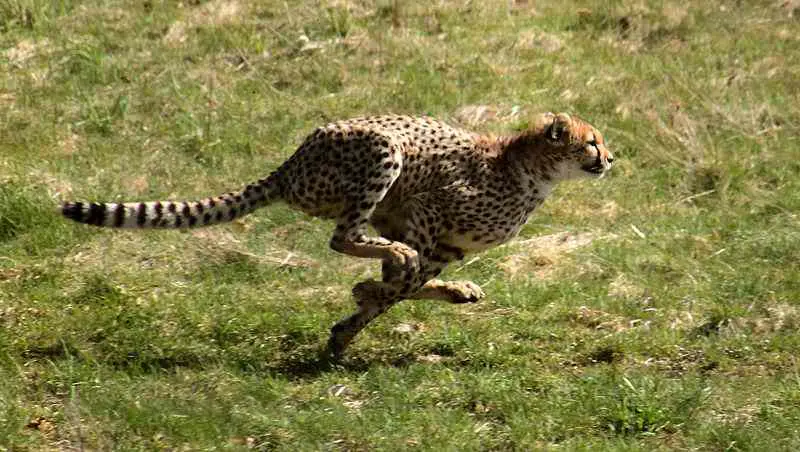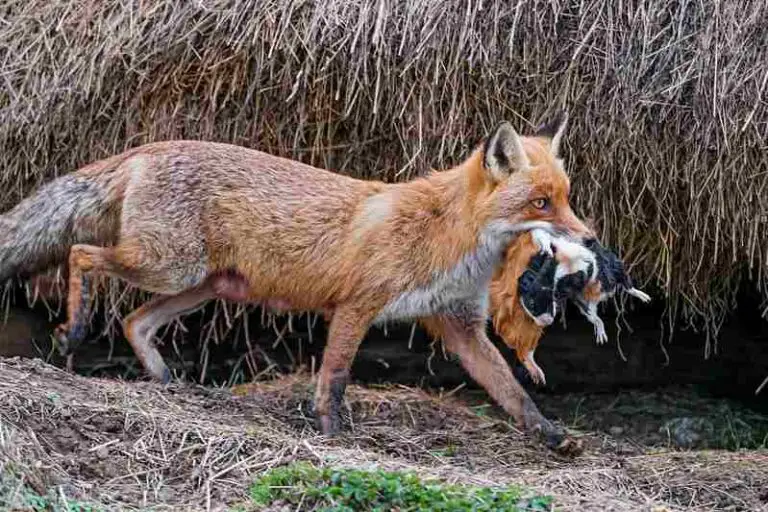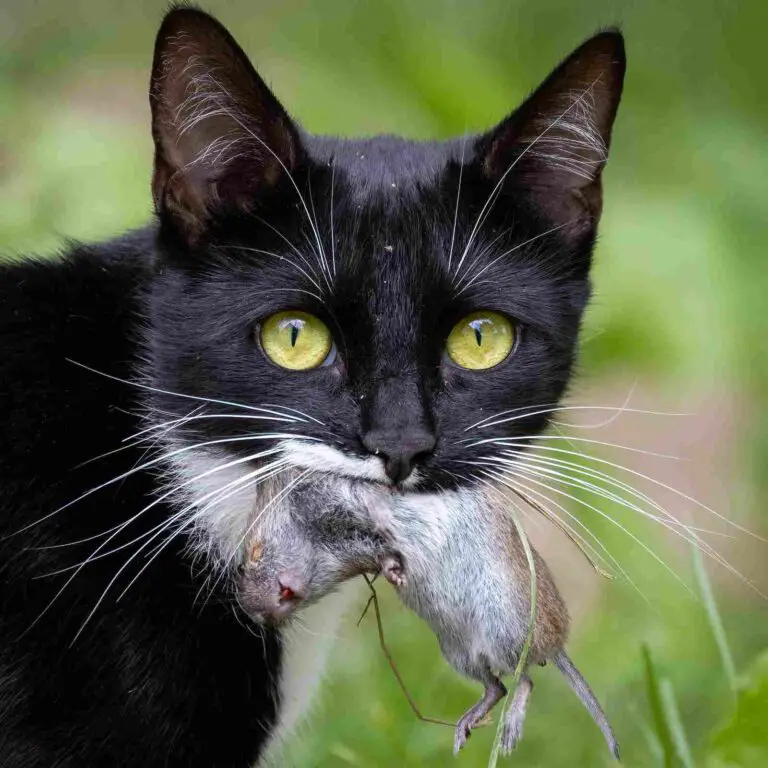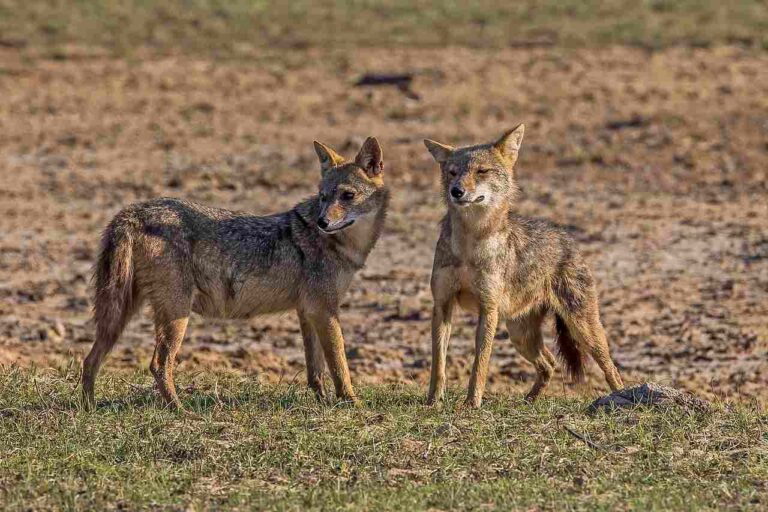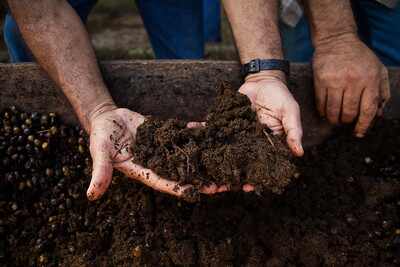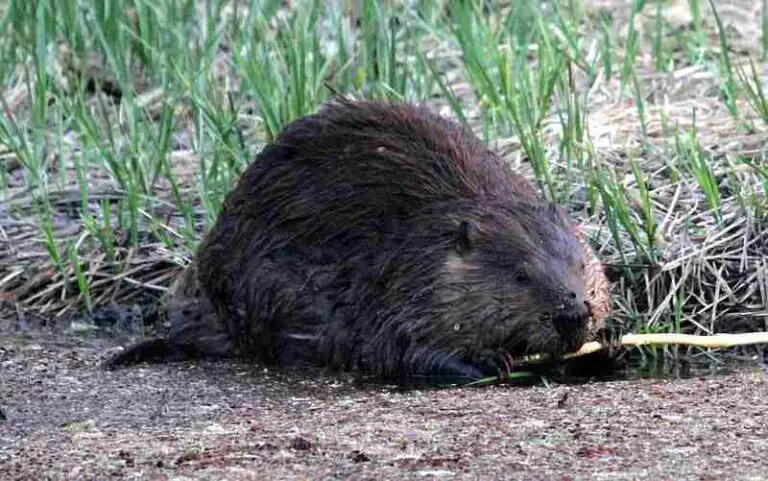Savanna Food Chain Trophic Levels and Components Explained
Savanna food chain are producers like baobab, primary consumers like wildebeest, secondary consumers like baboon, tertiary consumers like cheetahs, and quaternary consumers like African crowned eagle.
This article discusses the savanna food chain and its trophic components, as follows;
1). Producers in the Savanna (as a Trophic Level of the Savanna Food Chain)
Producers in the savanna biome are autotrophic organisms with the ability to capture solar radiation (particularly visible light-rays) and convert the same into chemical bioenergy and biomass, in a process known as photosynthesis [4].
In the savanna grassland, producers are important for their role in ensuring the sustainability of the ecosystem; especially its biotic components, by initiating the energy-transfer and recycling processes that occur in the food chain/web, and energy pyramid.
By occupying trophic level one (1) which is the basal level, producers function as the foundation of food supply to savanna organisms.
Producers in the savanna include trees like baobab; grasses like buffalo grass; alongside various species of wildflowers and shrubs.
Generally, savanna plants have adaptations for nutrient-access, water conservation, and defense/protection from herbivorous consumers.
Trees in the savanna include baobab and acacia.
Baobab trees in the African savanna ecoregion, have characteristics like thick trunks and large, succulent leaves for storing water and surviving periods of drought [2]. Their leaves are succulent and relatively large, serving as a photosynthetic system, source of shade, as well as a water and energy storage medium.
These leaves are shed early in the dry season, as a mechanism for further energy and water conservation.
Savanna primary consumers often feed on parts of the baobab, such as its fruits that are a food source for baboons and elephants.
Like baobab, the acacia tree is fairly dominant in savannas.
Their adaptive features include taproots for water accessibility at depth, waxy and small leaves for minimizing evapotranspiration/water-loss; toxic chemicals and thorns for self-defense against herbivorous consumers.

Grasses constitute the most dominant plant-category in the savanna (as implied by the name; 'grassland').
This is because the dry and relatively-deficient conditions in the savanna can hardly support any larger group of plants than grasses.
Also, grasses are very adaptable and ecologically-resilient, so that their population is difficult to eradicate, even in the event of hazards like wildfires.
Rapid growth of grasses ensures that food supply is continuous for primary consumers in the savanna, while sustaining carbon and oxygen cycles.
Star grass, Rhodes grass and buffalo grass are all examples of grasses that can be found growing in the savanna biome.
Although less-dominant than trees and grasses, wildflowers and shrubs are effectively represented by various species in the savanna.
They survive by reason of adaptive features, and constitute a notable portion of overall producer-biodiversity. Wildflowers in the savanna include Golden Everlasting and African Daisy; while shrubs include Wild Jasmine and Cape Honeysuckle.
2). Primary Consumers in the Savanna
Primary consumers in the savanna are herbivorous organisms that survive by feeding directly on autotrophs/producers, including trees, shrubs and grasses.
These organisms occupy trophic level two (2) of the savanna food chain, directly above the producers.
Through their activities, primary consumers help to establish and maintain the flow of energy from producers at the basal level, to non-herbivorous consumers in higher trophic levels. This is because they (after having consumed producers) serve as food for secondary, tertiary and quaternary consumers within their environment.
Primary consumers in the savanna include small mammals like rodents, large mammalian ruminants, primates, insects and birds. They may be classified based on feeding patterns into browsers, grazers, and frugivores.
Browsers include all primary consumers whose food comprises chiefly of shrubs, twigs, shoots and leaves.
The physiological features of these animals enable them reach vegetation at height; such as leaves in trees. An example of such features is the long neck of giraffes that allow them feed on tree leaves [1].
Browsers owe their pattern of feeding to a selective approach to food sources, which causes them to mainly consume specific plant parts even when these choices are not easily accessible.
Impalas, bushbucks and kudus are also herbivorous browsers in the savanna.
Grazers, on the other hand, are primary consumers that chiefly feed on grasses.
They are the most common, diverse and abundant primary consumers in the savanna, due to the large supply and easy accessibility of grasses.
Several grazers are ruminants, and they generally have specialized digestive features and mechanisms for effective consumption of various grass species.
Examples of grazers in the savanna are; wildebeest, zebras and gazelles. These organisms are social, and mostly move in herds comprising numerous individuals.

Frugivores or frugivorous primary consumers mostly prefer to feed on fruits and seeds.
In the savanna biome, these animals are crucial to the dispersal of seeds and areal distribution of plants. Some examples of frugivorous primary consumers in the savanna are; baboons, birds like parrots, and large mammals like elephants.
They may also supplement their fruit-and-seed diet with other plant materials like bark and leaves.
Herbivorous insects are also among primary consumers in the savanna. Food for these organisms comprises of fruits, stems, and leaves among other forms of plant matter.
Examples of savanna herbivorous insects are; beetles, caterpillars termites and grasshoppers.
3). Secondary Consumers in the Savanna (as a Trophic Level of the Savanna Food Chain)
Secondary consumers in the savanna are found in trophic level three (3), above primary consumers.
They include all organisms with carnivorous tendencies, that chiefly depend on herbivores as a food source. Asides herbivores however, a secondary consumer is likely to prey upon any small animal within its reach.
Feeding activities of secondary consumers plays a role in the evolution and population-size, of primary consumers, as well as in the sustenance of regional-ecologic equilibrium.
Classic examples of secondary consumers in the savanna biome include; medium-sized canids like wild dogs, and omnivorous primates like vervet monkeys.
The African wild dog is one of the carnivorous canids in the savanna.
They are social and capture prey by hunting in packs, which enables them successfully prey on large animals.
Omnivorous primates in the savanna are part of a group of opportunistic feeders that have adapted to various food sources including plant and animal matter. The flexibility of their food selection is an advantage for these animals, placing them at less risk of food scarcity than the more-selective herbivores and carnivores.
Examples of omnivorous secondary consumers in the savanna are; vervet monkeys and baboons. Food for these organisms includes small vertebrates, insects (including herbivorous insects), fruits, flowers, seeds, and leaves.
Studies show that baboons may prey on even small antelopes [3].
4). Tertiary Consumers in the Savanna
Tertiary consumers in the savanna are often the highest category of organisms at the apex of the food chain, losing this position only in cases where quaternary consumers occur.
They include large and/or biologically advantaged animals that can consume other savanna species in multiple, lower levels.
Very often, the tertiary consumers are predominantly large carnivores that use their size and hunting prowess to prey upon both herbivores and other carnivores.
Activities of the tertiary consumers help in regulating the size(s) of native populations, while facilitating survival adaptations and biological speciation in their prey. These effects are essential to the effective functioning of the entire ecosystem.
Examples of tertiary consumers in the savanna ecosystem are; scavengers like the African vulture and the hyena, as well as felines like cheetah. This list deliberately excludes the largest predators like lions, in order to place them in trophic level five (5) as quaternary consumers/apex predators. In cases where only four trophic levels are represented, such apex predators will occupy trophic level four (4) alongside scavengers.
The scavengers in savanna ecoregions are animals that are able to feed on carrion, or carcasses of other animals.
They are tertiary consumers because this feeding habit enables them consume organisms at every level of the food chain asides that of producers (as scavengers are not herbivores).
Examples of scavengers in the savanna are vultures and spotted hyenas.
On their part, hyenas are also predators that hunt both small and large animals. Like the canids they are social and often use numbers to take down large prey.
Felines like the cheetah can be called tertiary consumers while other felines may be classified as quaternary consumers, because they are generally less advantaged in size and strength than these other felines, and in rare cases, may even fall prey.
However, they have the advantages of speed and agility, which they use in capturing prey like impalas and gazelles.

5). Quaternary Consumers in the Savanna (as a Trophic Level of the Savanna Food Chain)
Quaternary consumers in the savanna are the topmost, apex predators in the food chain.
They include large carnivores capable of feeding on all consumers beneath them, including other carnivores.
The ability of an organism to function as a quaternary consumer depends on its level of biological advancement; with some thriving by means of aerial navigation, sensitivity, speed, strength and size, among others.
Examples of quaternary consumers in the savanna are; large raptors like African crowned eagle, as well as felines like leopards and lions.
Conclusion
The savanna food chain comprises of;
1. Producers
2. Primary Consumers
3. Secondary Consumers
4. Tertiary Consumers
5. Quaternary Consumers
References
1). Cameron, E. Z.; du Toit, J. T. (2007). "Winning by a Neck: Tall Giraffes Avoid Competing with Shorter Browsers." The American Naturalist 169(1):130-5. Available at: https://doi.org/10.1086/509940. (Accessed 7 June 2023).
2). Chapotin, S. M.; Razanameharizaka, J. H.; Holbrook, N. M. (2006). "Water relations of baobab trees (Adansonia spp. L.) during the rainy season: does stem water buffer daily water deficits?" Plant Cell Environ. 2006 Jun;29(6):1021-32. Available at: https://doi.org/10.1111/j.1365-3040.2005.01456.x. (Accessed 7 June 2023).
3). Sommer, V.; Lowe, A.; Jesus, G.; Alberts, N.; Bouquet, Y.; Inglis, D. M.; Petersdorf, M.; van Riel, E.; Thompson, J.; Ross, C. (2016). "Antelope Predation by Nigerian Forest Baboons: Ecological and Behavioural Correlates." Folia Primatol (Basel). 2016;87(2):67-90. Available at: https://doi.org/10.1159/000445830. (Accessed 7 June 2023).
4). Quirk, J.; Bellasio, C.; Johnson, D. A.; Beerling, D. J. (2019). "Response of photosynthesis, growth and water relations of a savannah-adapted tree and grass grown across high to low CO2." Ann Bot. 2019 Aug 2;124(1):77-90. Available at: https://doi.org/10.1093/aob/mcz048. (Accessed 7 June 2023).
